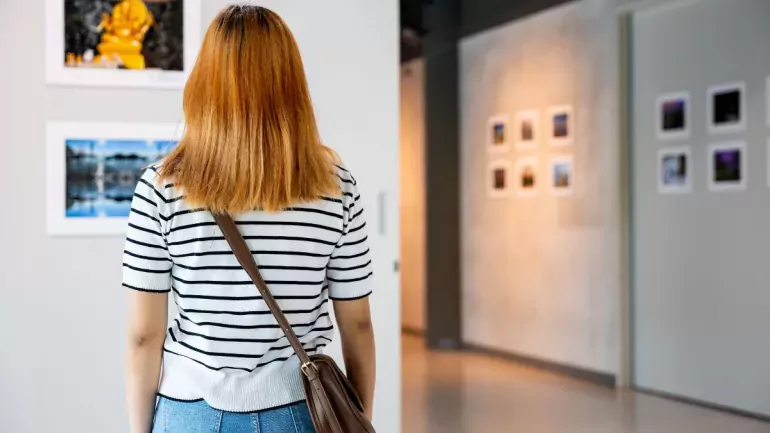ART NEWS
Your first gallery show can jumpstart a bourgeoning art career if planned correctly. Here is how you can successfully launch your first gallery showing.
How to Successfully Launch Your First Gallery Showing
BY ALEX TOWNASTALLI, ARTCENTRON
Launching your first gallery showing can feel like stepping onto a stage for the first time—exhilarating, nerve-racking, and rewarding. Whether you’re a seasoned artist or a fresh face in the art world, your first showing is a monumental step in your career. To help you navigate this exciting journey, here are some essential tips for successfully launching your first gallery showing.
Cater to Your Audience
Understanding your audience is the key to a successful gallery showing. Your art may speak for itself, but knowing who’s paying attention will make all the difference. Are they contemporary art enthusiasts, classic art lovers, or a mix of both?
Tailor your exhibition to resonate with their tastes and preferences. Doing so doesn’t mean you should compromise your artistic integrity but rather present your work in a way that connects with your viewers on a deeper level.
Price Your Artwork Fairly
Pricing your artwork can be as challenging as creating it. Set prices that reflect the time, effort, and materials invested into each piece while also considering what the market can bear. Overpricing can deter potential buyers, but underpricing can undervalue your work.
Research similar artists and their pricing strategies, and consult with more experienced artists or gallery owners to help you determine your prices. Fair pricing helps build trust with your audience and sets a precedent for your future work.
Consider the Gallery Lighting
Lighting can make or break the visual impact of your artwork. Proper illumination brings out your pieces’ true colors, textures, and details. You should pay special attention to how your artwork will appear in photographs and videos.
Explore different types of video production lighting to find what best enhances your artwork. Whether it’s soft, diffused light for delicate watercolors or strong, direct lights for bold oil paintings, the right lighting setup can dramatically transform how people perceive your work.
Maximize Your Showing Space
The layout of your art presentation plays a crucial role in how visitors experience your art. Organize the space to create a flow that guides viewers through your collection in a meaningful way. Consider grouping related pieces, creating focal points, and leaving enough space for viewers to step back and appreciate each work. A well-thought-out arrangement can turn a simple showing into an immersive art experience.
Obtain Transportation for Your Artwork
Transporting artwork safely to the gallery is an oft-overlooked aspect of preparing for a showing. Ensure you have reliable, secure transportation for your pieces. Whether you’re hiring professional art movers or doing it yourself, consider factors like distance, weather conditions, and the fragility of your work. Proper packaging and handling are crucial to prevent any damage during transportation.
Practice Your Conversational Skills
As an artist, you’re not just showcasing your work; you’re also representing yourself. Be prepared to engage with visitors, answer questions, and discuss your art. Practicing your conversational skills can boost your confidence and help you connect more effectively with your audience. You can share the stories behind your creations, your artistic journey, and your future aspirations.
Your first gallery showing is a milestone that deserves careful planning and attention to detail. Each aspect contributes to a successful launch, from catering to your audience to mastering the art of conversation. With these tips in mind, you’re well on your way to successfully launching your first gallery showing.
